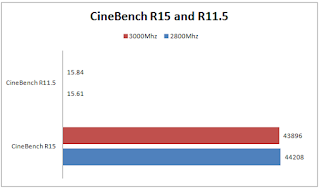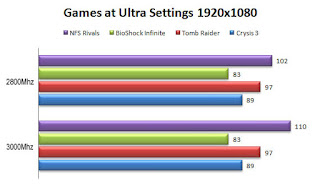Its been over 20 years now since Corsair first set sail in the PC market as a humble L2 cache module manufacturer and ever since then it's been one hell of a ride for them where today they have a plethora of enthusiast grade product line up floating in the market. One can assemble an entire PC primarily composed of Corsair products.
So once again today I'm here with a Corsair quality product and this time its the Corsair Vengeance LPX 16GB DDR4 2800Mhz memory kit with latency timings of CL16-18-18-35. It belongs to the famous Vengeance series memory line up that's dominated the entry level PC market for quite a while with their DDR3 kits. The LPX, presumably abbreviation for Low Profile Xtreme, is not only in the new DDR4 flavor with four colors to choose from and match with your setup but also boasts a super-high frequency yet it still has a low profile design making it ideal for use in compact system builds and with large tower heatsinks that are definitely going to be necessary to cool some of Intel’s swanky new Haswell-E Core i7 5XXX processors. All this in a budget friendly $389!
Below are the official specifications of the Corsair LPX DDR4 2800Mhz
A look at the specifications reveals, that these Corsair appears to be cautious in choosing frequency as well as timings. The Hynix MFR chips on these modules are set to run at CL16-18-18-35.The Easter egg is the XMP 2.0 feature. As you may or may not know when you use memory higher than 2666MHz with Haswell-E CPUs the base clock has to be changed from the default 100MHz. Corsair’s Vengeance LPX memory actually has an XMP profile which not only sets the memory frequency, timings and voltage but it also sets the CPU strap and base clock to the correct level. This is ideal because if you’re only a modest PC user having to set all those things yourself is quite daunting, the task even daunts me slightly when overclocking!
We'll come to these details later on in the review.
Closer Look
Unlike most other memory kits that come in a standard plastic clamshell with a cardboard insert, Corsair packages this model in a little branded box. It is a pretty compact affair since the modules feature fairly low profile heatspreaders. Inside there are two separate plastic trays that each hold two modules. They can be opened by hand - no knife required unlike with blister packs - which means that they are also resealable. There is also a little pamphlet on the inside listing warranty details.
Although these memory modules feature an updated look, they definitely share some design DNA with those found in the previous Vengeance LP DDR3 memory kits. Made of anodized aluminium, these are fairly low profile heat-spreaders with a height of about 34mm/1.34".
On removing the heat spreaders from the Vengeance you'll find that Corsair is putting MFR chips from SK Hynix on these modules (photo courtesy Ocaholic) . These are basically the chips every DDR4 memory maker is using these days, which are the best overclocking DDR4 memory chips on the market right now.
Load Test and Benchmarks
CPU: Intel Core i7 5960X
Motherboard: GIGABYTE X99 UD4P
RAMs: Corsair Vengeance LPX 2800Mhz 16GB DDR4 (4x4)
CPU Cooler: Corsair H110 CPU Liquid Cooler
Graphics card: Gigabyte R9 290X windforce 3X OC 4GB DDR5
Hard disc: ADATA SP920SS 256 GB SSD
Power Supply: Cooler Master V1200 1200W 80+ Platinum
The memory was quickly recognized at the 2133Mhz by simple plug and play method, the stability tests ran perfectly and there was no issue at all.
So I moved on to use the XMP 2.0 profile #1 out of the two provided and the memory kicked in stable at 2800Mhz without any issue. Remember earlier I'd mentioned about auto adjustments made by this XMP 2.0 profile to various parameter? Upon enabling the profile the BCLK frequency is automatically set to 127.3, which lands the memory speed at exactly 2800 MHz. However, a side effect of this XMP profile is that the CPU, Cache, and DMI/PEG frequencies are slightly overclocked too. You end up with 64 MHz CPU, 55 MHz Cache, and 1 MHz DMI/PEG overclocks. Those minor increases shouldn’t require any voltage modifications on the user’s part, but it’s certainly something to be aware of.
Upon inserting the XMP 2.0 #2 profile the baseclock and voltage were automatically set back to 125 and 1.35V respectively whereas the memory reached a dazzling frequency of 3000Mhz, stable and working without any signs of the slightest of flicker! This definitely adds a ton of value to this kit.
For the comparison we'll use these two XMP 2.0 enabled profile as anyone buying a X99 chipset board will not use a memory at stock speeds!
AIDA64 Memory Benchmarks
The first set of tests are from AIDA64 Engineer Edition and include the memory read/write/copy/latency benchmarks. The read and write tests show less than a 2% advantage for the Vengeance LPX kit at 2800Mhz when compared to the 3000 MHz, which is more than likely due to the CPU and Cache overclock it receives with its XMP profile is being used. Still, a pretty impressive showing for the Corsair kit here.SuperPi and wPrime
SuperPi and wPrime are timed benchmarks, so keep in mind, lower values in the chart are better. As expected, the systems with a higher CPU clock win out in the single threaded SuperPi test. The wPrime tests show the opposite result with the systems having more CPU cores dominating here.CineBench R15 and CineBench R11.5
CineBench is a rendering benchmarking tool that exploits the system's CPU and RAM power to render a high quality image. The testing shows a slight advantage for 2800Mhz frequency by less than 2% on both tests for the Corsair LPX.7zip and x264 Benchmark
7zip is a compression and decompression tool whereas x264 determines the video conversion and number crunching potential of the system. The 7zip results again show an advantage for 2800Mhz when compared to 3000Mhz. The x264 test runs again show the 2800Mhz frequency coming out on top by 2% or less.Gaming Benchmarks
These are few of the most demanding games in terms of a range of components and hence stress the full system. All these games ran at Ultra settings on 1920x1080 resolutions.Here we see that there is no to unnoticeable difference when using the ADATA XPG Z1 on two different frequencies simply because games are more CPU and GPU dependent these days. NFS Rivals does show some difference of 5 FPS and that is because it needs the RAM to process faster so as to render distant scenes on high speed racing instances.
Overclocking
Due to the already high speed of 3000Mhz overclocking the Corsair Vengeance is not only tough due to very less headroom available but also more of a silicon lottery. I manged a two way approach as always and surprisingly manged to get 2520Mhz on the same XMP 2.0 #1 profile at much lower latencies of 12-12-12-26-1T from the stock 16-18-18-35-2T.Second time I increased the latency to 15-15-15-35-2T but managed a heavy overclocking of 3200Mhz at 1.65V which is near maximum of what the Giagbyte X99 UD4 can support and also in terms of voltage the near maximum the RAM can endure!
Both the times I managed to boot into Windows just fine and run a series of benchmarks successfully though on running Prime95 the system started freezing randomly and even crashed showing that this over clock is not for heavy users but for day to day uses. But none the less the Corsair LPX 16GB DDR4 2800Mhz Memory kit sure can take some beefy over clocking.
My Verdict
 Corsair has never let me down in any field be it a cooler or a cabinet, if not the best its definitely not the worst either. Same is the case of the Corsair Vengeance LPX 16GB DDR4 2800Mhz Memory kit which might not appeal to record breaking over clockers but will definitely steal the heart of an enthusiast or system builder. It performs smooth, over clocks well and looks fantastic!
Corsair has never let me down in any field be it a cooler or a cabinet, if not the best its definitely not the worst either. Same is the case of the Corsair Vengeance LPX 16GB DDR4 2800Mhz Memory kit which might not appeal to record breaking over clockers but will definitely steal the heart of an enthusiast or system builder. It performs smooth, over clocks well and looks fantastic!The low profile heat spreader are efficient and give it an aesthetic appeal along with minimum to zero interference in air flow for your massive CPU coolers. With four colors to choose from you can easily mix and match these sticks to gel them easily with your entire system theme.
Priced at just around $389 the Vengeance LPX 2800Mhz is the cheapest of the lot and an ideal choice for anyone out there who treats their PC like well a PC!
I give it 9.5/10



































.JPG)
0 comments:
Post a Comment